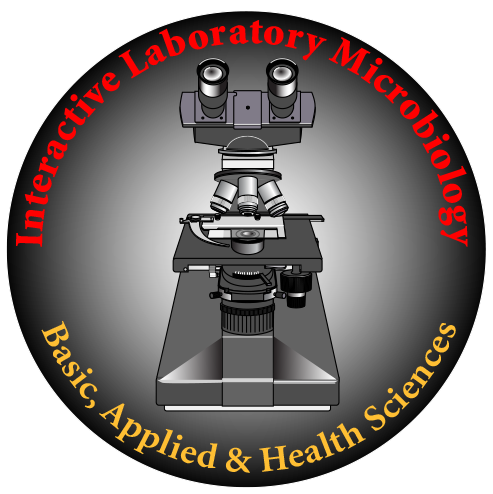

Famine Memorial, Dublin

Dr. Paulton was Professor &
Chair of Microbiology,
Trinity Western University,
British Columbia, Canada.
He has taught medical microbiology to nurses, pharmacists & physicians, & also basic & applied microbiology to students in Colleges of Sciences & Agriculture.
His hobbies are photography & travel.

Jeanie Johnston Museum,
Famine Memorial, Dublin

Author at Islas Ballestas, Peru
Enjoy the Experience!
Welcome from the Author
ILM Objective 1
ILM Objective 2
ILM Objective 3
In Conclusion
Welcome! I am Richard Paulton, author of Interactive Laboratory Microbiology (ILM).
We are in Dublin, Ireland for this presentation of Interactive Laboratory Microbiology, an interactive, multimedia presentation of introductory & intermediate laboratory microbiology.
There are three unique objectives of Interactive Laboratory Microbiology. We are visiting Dublin to help develop one of these objectives.
ILM Objective 1
● ILM Objective 1 provides for instructors & students in laboratory microbiology a reference of laboratory procedures — step-by-step animations, best practice animations & techniques videos — for Biosafety Level 1 (BSL1) & Biosafety Level 2 (BSL2).
✱ Interactive Laboratory Microbiology includes 300 step-by-step animations of microbiology procedures for Pure Culture Techniques, Staining Techniques, Microscopy, Eukaryote Microbes, Microbial Physiology, Microbial Biochemistry, Bacterial Genetics, Microbial Ecology, Food & Water Microbiology, & Clinical Microbiology.
✱ Interactive Laboratory Microbiology includes 390 high-resolution techniques videos showing microbiologists practicing their microbiology skills in BSL1 & BSL2.
✓Interactive Laboratory Microbiology also includes 570 best practice animations to identify, for each individual laboratory procedure, the additional skills needed to follow either Biosafety Level 1 (BSL1) or Biosafety Level 2 (BSL2).
● In other words, Interactive Laboratory Microbiology demonstrates how to do laboratory microbiology in a wide range of microbiology subdisciplines & procedures.
ILM Objective 2
● ILM Objective 2 provides a means to develop skills of observations & interpretation of images of microbes & videos of microbe motility.
● Interactive Laboratory Microbiology includes over 1,770 interactive images of algae, bacteria & cyanobacteria, bacteriophage, diatoms, dinoflagellates, euglenoids, fungi, fleshy fungi, & cultivated & wild edible mushrooms, green algae, lichens, protozoa, slime molds and water molds to investigate cell morphology & structure.
✟ Interactive Laboratory Microbiology also includes 65 high-resolution videos to investigate the range of motility in eukaryote & prokaryote microbes.
ILM Objective 3
● ILM Objective 3 illustrates the significance of microbes & microbiology from historical & contemporary perspectives. “Scenic microbiology” provides 250 investigations with 1000 images & 85 videos for Readers to investigate. Scenic microbiology is microbiology in the real world, outside the theory of the classroom & outside the limitations of the laboratory. In turn, scenic microbiology requires students to put into practice their knowledge & understanding of laboratory microbiology techniques & observations.
❖ That is why we are here in Dublin, Ireland. We are visiting the Jeanie Johnston Museum & Famine Memorial. In the mid 1800’s, over 1 million people in Ireland died from starvation as a result of potato blight caused by a water mold. More than 1 million people emigrated, mainly to Britain, the United States, Canada & Australia. The Irish Potato Famine caused one of the major mass migrations of people in modern history. Interactive Laboratory Microbiology also presents observations at Islas Ballestas in Peru to suggest the possible link between 19th century international agricultural trade (the potato, guano fertilizer) & The Irish Potato Famine.
In conclusion
Interactive Laboratory Microbiology is designed as an instructional resource for microbiology instructors & as a more complete guide for students in their microbiology experience.
I invite you to review this detailed Prospectus. Take the ILM video links out for a “test drive”.
Check out (1) ILM Navigation & (2) ILM Page Design & Color Coding, (3), (4), (5) Best Practice, (6) Objectives & Indices, & (7) Microbiology Procedures with step-by-step techniques animations, best practice animations, & techniques videos.
Interact with (8) Images of Microbes & (9) Motility of Microbes.
Interact with (10) ILM Search.
Challenge (11) ILM Quick Quiz & (12), (13) ILM Question Bank.
Explore (14), (15) ILM Scenic Microbiology of historical & contemporary importance.
(16) ILM Virtual Laboratory Microbiology
Enjoy the experience!
The ILM team
Microbiologists Lisa Chattell, BS, Shana Evans, BS, Lee Haines, PhD, Darcy Kehler, BS, Joshua Paulton, BA, MA, Richard Paulton, PhD, Kim Redshaw, MS, & Jemma Tjosvold, BS, BN
Vector Drawings & Animations Lisa Friesen, BS, MD, Anna Moore, BS, MPT, Richard Paulton, Ph.D.
Video Editing & Narrative Joshua Paulton, MA
Manuscript Editing Anita Paulton, BEd
Contributors
Agriculture Canada: photographs of Asian Gypsy Moth
John Anderson, BS: photographs of snow algae, Northwest Territories, Canada
Vickie Bowne: photographs of Bonaire salt works, Eastern Caribbean
CH Four Biogas methane generator
George Folz: photographs of Amanita muscaria, the fly agaric
Ross Kennedy, MD, & Sherron Kennedy, BN: photographs & video of African herbivores
MetroVancouver primary & secondary sewage treatment
Jane Scheuchenzuber, BS: photographs of Alaska’s “Bull’s Eye” lichen
Bill Scheuchenzuber, PhD (deceased): photographs of coral, Great Barrier Reef, Australia
Karen Steensma, MS: photograph of Hawaiian coral reef
Gordon Tisher, BS: photographs of red tide, Vancouver, Canada
Neysa Wiens, MS, & Anita Paulton, BEd, play Skibbereen
Shannon Wright, PhD: photographs of spawning & water mold-infected Pacific salmon